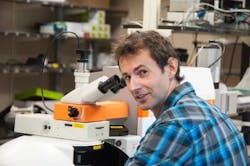Raman spectroscopy helps detect radiation damage in cells, tissues during cancer treatment
Interested in detecting and understanding damage in cells and tissues from ionizing radiation used in cancer treatments, a team of researchers at the Irving K. Barber School of Arts and Sciences at the University of British Columbia (Vancouver, BC, Canada) is working to find out if it is possible to make an early detection tool based on Raman spectroscopy, either prior to first treatment or within the first few fractions of treatment. The research team's ultimate goal is to help personalize prescriptions based on an individual's response to radiation.
Related: Raman-based in vivo system provides objective diagnosis of pre-cancer in real time
The researchers, led by associate professor Andrew Jirasek (a physicist by training who specializes in how to accurately measure radiation treatments for cancer patients), apply Raman spectroscopy to look at the unique cellular changes that occur following radiation. The technique, Jirasek explains, allows him and his group to record and analyze information about how the molecules and cellular constituents change throughout treatment. Dosage can then be adjusted to be more precise and targeted.
"Previously, the only outcome of treatment was disease status; for example, tumor size," Jirasek continues. "Our hope is that Raman analysis will provide accurate treatment evaluation sooner. Like many other diseases, timing with cancer treatment is everything. The sooner successful therapy is implemented, the better for the patient."
After conducting cell and animal model experiments, the group is now at the point of testing the system on prostate cancer patients.
Full details of Jirasek's research program and publications are available at http://medicalphysics.ok.ubc.ca/faculty/jirasek.html.

